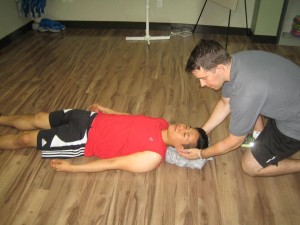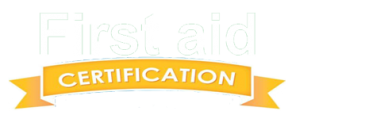Overview
It may never happen during your lifetime, but it is always in your best interest to be prepared in the case of an emergency situation, whether you are simply at your home or out in public. When it comes to becoming more prepared for those types of situations, many individuals take advantage of taking a first aid and CPR course to make them feel more of a readiness and understanding for the emergencies that can arise. if you are interested in learning first aid and knowing the signs of a true emergency, then we are here to help! In fact, learning the basic steps of first can be as simple as learning your alphabet; Let us explain.
The Four Basic Steps
- Look for Signs of Danger:

It may never happen during your lifetime, by it is always in your best interest to be prepared in the case of an emergency situation
The first and most important thing to do when facing a first aid emergency situation is to check and see if danger is around. Look for anything that could harm you, other witnesses, or the injured victim as well, and try not to put yourself in any type of harm’s way.
- Check for Responsiveness and Send for Help:
The next step when assessing the situation at hand is to look for any signs of responsiveness from the victim you are helping. Look for any signs of consciousness and see of the person responds when touched or spoken to. Make sure to also call for an ambulance and paramedics to come so they can further take care of the situation after you have been applying the first aid care that you can.
- Make Sure Airways are Clear:
Once emergency help has been contacted, it is time to take care of the victim. First, check to make sure their airways are clear and that the victim is not choking on something that can cause breathing to falter. If the victim is conscious and responding, make sure they can breathe and that the airway is not blocked in any way. If unconscious, check their airway by tilting back their head and looking into their mouth. If something is blocking their breathing, turn the victim into one side, and try to clear the contents out of their mouth and throat, and continue to check for breathing.
- Check for Breathing and Perform CPR:
Once you have made sure that the airways are clear, it is time to make sure they are breathing effectively. You can assess if they are breathing by looking for up and down chest movements as well as feeling for breathing with your hand on their chest. If the individual is unconscious, but breathing, lay them back on their side and wait for medical help to arrive. If the individual is unconscious and not breathing, it may be time to apply CPR to the victim until medical help arrives. CPR consists of compressions on the chest with breaths in through the mouth while plugging the nose. The objective is to getting the heart pumping and the individual breathing in their own until medical help arrives.
Knowing these four steps of basic first aid can be the difference between life and death for the individual you are helping, and is always a great asset to have knowledge about. Everyone should take the opportunity to get the first aid and CPR training that can help save someone’s life, and it is as simple as learning your ABC’s.
